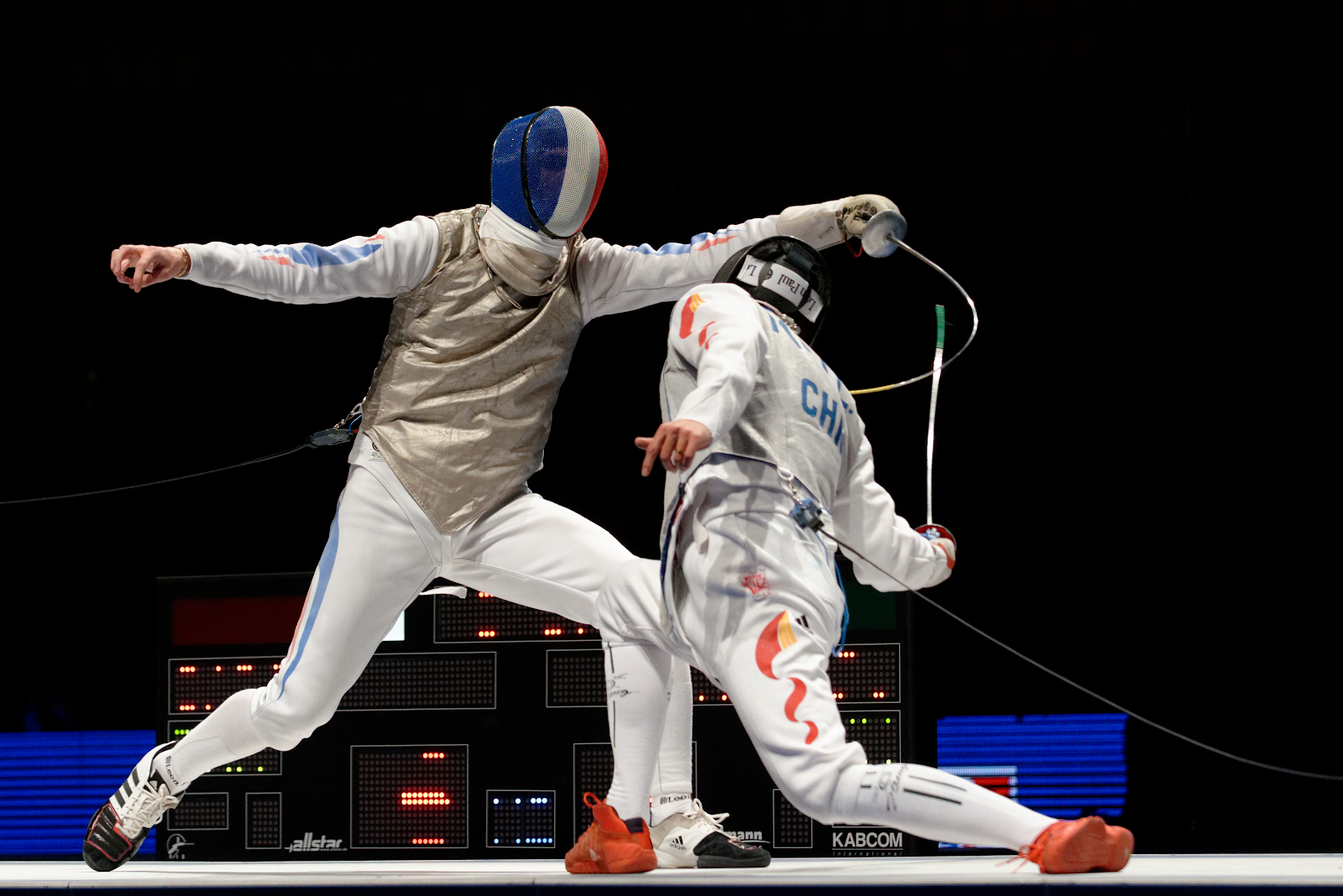Épée
Épée is the best weapon for beginners because it has the simplest rules. The épée is a thrusting weapon which means it only scores on the tip. The blade itself is triangular and is the heaviest of all three weapons. The target area is the entire body so you can hit anywhere from the tip of your toes to the top of your head.
Since there’s no right-of-way in épée, any touch that you score on your opponent’s body counts as a point and if both you and your opponent strike each other at the same time, it’s a double touch and both of you get a point.
Out of all three weapons, épée tends to be the slowest-moving because just as you’re trying to hit the other person, you also have to avoid being hit.
Épée is a good place to start if you’re a beginner so you can learn the basic rules and moveset without worrying about right-of-way. It also requires more stamina rather than explosiveness compared to the other two weapons.

While height and limb length is an advantage in all three weapons, the advantage is most obvious in épée. If you like maining tanks or frontline characters, you’ll like épée.
Foil
Foil is the most popular weapon worldwide. The blade is rectangular and the lightest in weight out of all three. Due to the blade’s flexibility, flicking is a viable option although the ability has been nerfed in recent years.

The foil is also a thrusting weapon. However, the amount of force required to register a point is significantly less than an epee meaning that there’s a greater chance that even grazing your opponent with the tip of the blade would register a point.
Foil does observe right-of-way. Much like how a person who is threatened with a real sword will naturally prioritise a defensive action to avoid being hit before attempting their offence, right-of-way requires that fencers maintain their priority in order for their point to count.
The target area is the torso. Since the target area doesn’t include the arms and hands, the bell guard of the foil is the smallest out of all weapons. Foil requires the most point control and is arguably the most cerebral of the three weapons, requiring the most flexibility in both thought and body. Foil requires adaptation on the fly and explosiveness so rather than stamina or brute strength, reflexes, precision and speed are key. If you like maining rogue/thief/berserker/flank and otherwise glass cannon characters, then foil is for you.
Sabre
Sabre is the fastest weapon and arguably the most exciting to watch. The sabre is a slashing weapon which means points can be registered all along the blade. Since the scoring portion of the weapon isn’t limited to the point, sabre fencers typically fence at a much closer distance than the other two weapons.

Sabre also observes right-of-way. While foil’s explosiveness is more measured and contained, sabreists come right out the gate swinging.
The target area is the entire upper body, from the hips to your head. This greater target area and the slashing nature of sabre mean that there is both more to hit and more to hit with, upping the stakes and tension.
Since sabre fencing came from the cavalry sword, sabres have a sick bell guard that curves around the hand, allowing their fencers to feel like pirates battling the bourgeoisie, only with better personal hygiene.
Sabre requires not only speed and reflexes but also some strength. If you like maining DPS or melee characters, then you’ll love sabre.